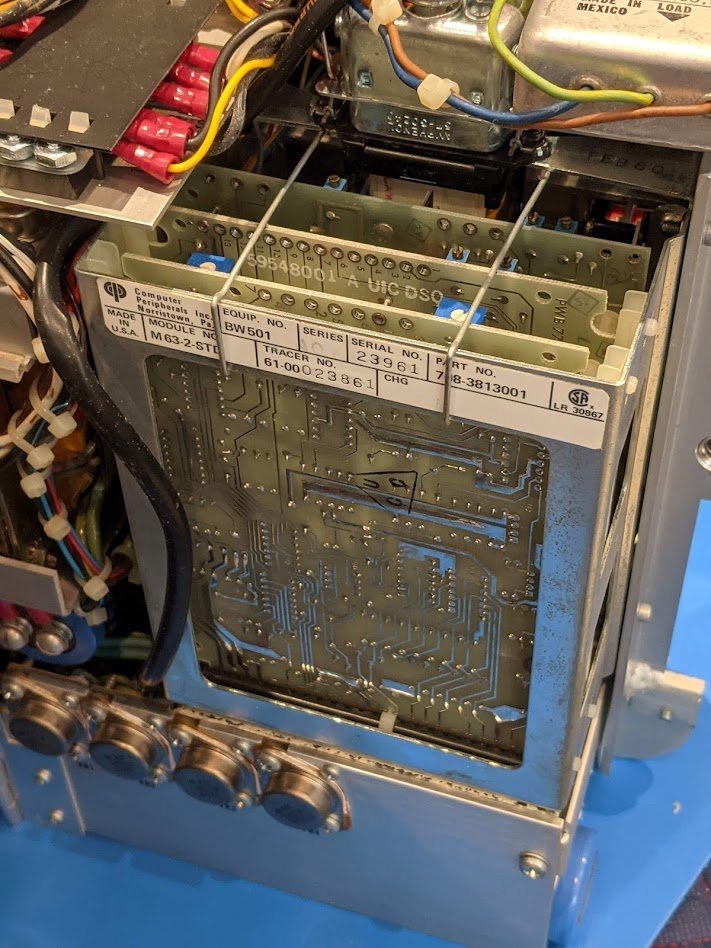the System 370 was a series of IBM mainframes from the 1970s. it was the follow-on to the System 360. 

you could connect a variety of peripherals to your System 370, including things like printers, disks, tapes, and so forth. except these peripherals were typically quite large, like this array of hard disks! 

an interface bus connected each peripheral to the computer. something like USB or a parallel port, but much larger (natch). IBM used a system called Bus and Tag. you need two of these large cables. one (Bus) carried 8 bits of data, and the other (Tag) carried control signals. 

it was (sort of) descended from these giant connectors from the '40s and '50s.
https://twitter.com/TubeTimeUS/status/1464343334382563330
anyway, what does a 370 channel simulator do? it lets you perform low-level testing of a System 370 peripheral (or peripherals, since Bus and Tag supported multiple daisy-chained peripherals).
sharp-eyed folks will notice that this 370 channel simulator doesn't say IBM anywhere on it, just Control Data. 

this is because CDC made plug-compatible peripherals for the System 370, so presumably this device was designed for testing them.
en.wikipedia.org/wiki/Plug_comp…
en.wikipedia.org/wiki/Plug_comp…
let's take it apart! it's very tightly packed inside, with a card cage on the left, a smaller card cage on the right, a big power transformer in the middle, and the power supply regulator in the lower right. 

the wiring harness feeds into wire-wrapped edge connectors on the back of the card cage. you can also see two powerful cooling fans. 

the cassette deck is no ordinary audio tape player. it has some pretty serious electronics on the back. check out the row of test points at the top of each card. 

this card has four 74S281 chips. these are ALU chips -- this device is actually a full-blown computer! 

the architecture is very simple, but includes conditional branches, ALU instructions, tape IO, and (of course) instructions to manipulate the bus and tag peripheral interface.
the tape looks like an ordinary audio cassette, but it's a specialty data tape. the transport is digitally controlled and can read and write entire blocks of data, automatically performing CRC checks. 

another cool feature is that you can manually adjust the CPU clock! it's handy for slowly stepping through a program. 

did i mention it comes in this really cool aluminum suitcase? match it up with an elegant wool suit, aviators, and handcuff it to your wrist to deter would-be thieves. 

• • •
Missing some Tweet in this thread? You can try to
force a refresh

























